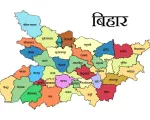For decades after independence, the Indian media played an adversarial role in holding those in power to account. Major exposés brought down state governments, and cartoonists openly mocked political leaders. The 1970s were both a golden and dark age for press freedom. Before and after the Emergency, the media used its liberty to the fullest.
For the next three decades, newspapers and television channels, with some exceptions, largely maintained a fair and independent stance. However, post-2014, the media pivoted towards nationalism and development. Mainstream media fully backed the ruling establishment’s vision of nation-building, prompting the opposition to label it “Godi Media” (lapdog media). Faith-driven media institutions corrected what they saw as past mistakes and aligned their policies with the nation’s developmental agenda.
In recent years, Indian media has faced intense scrutiny and criticism. With its growing influence, mass media has assumed contradictory roles, leading to public dissatisfaction. The rise of social media has further complicated the landscape, transforming passive readers into active participants. This shift has presented new challenges for Indian journalism.
Like other industries, Indian media is undergoing a transformation. The older generation sees it as a decline in journalism, while younger professionals view it as an exciting evolution. Moving away from the missionary mindset of post-1947, the media has become a profit-driven industrial enterprise.
Public commentator Professor Paras Nath Chaudhary notes, “Until the 1970s, the media played an adversarial role. Today, business interests dominate, sidelining journalism’s core mission of amplifying public voices.” Print and electronic media are often accused of tailoring content to suit their funders. The race for TV ratings (TRPs) has sidelined serious human issues, as seen in several recent incidents.
For instance, in Patiala, a businessman set himself on fire in front of cameras, yet the media focused on capturing the spectacle rather than intervening. Similarly, a family in Madhya Pradesh consumed poison on camera due to financial distress, and in Gujarat, a woman was forced to walk the streets in undergarments. Such incidents raise grave ethical concerns about modern journalism which finds sustenance from Peepli Live syndrome.
Digital and social media have radically altered news dissemination. Platforms like Twitter, Instagram, Facebook, YouTube, and news apps have become primary news sources. However, with this shift, challenges like fake news, media manipulation, and trial-by-media have emerged, questioning the accuracy and reliability of information. “The rise of AI-generated content brings additional ethical concerns, potentially affecting media credibility,” warns consultant Mukta Gupta.
Senior journalist Ajay states, “Commercialization has put media under advertisers’ influence. Many media houses now prioritize ad revenue over independent journalism, affecting news ethics and presentation.” In this evolving landscape, the responsibility of media professionals has grown significantly.
Adapting to new technologies while maintaining journalistic integrity is crucial. Educator Ashutosh emphasizes that media organizations must rigorously verify doubtful information. Bangalore-based senior media professional Joseph Senti asserts, “Indian media must realign itself with these changes. Strong policies and thoughtful strategies are necessary to uphold journalistic dignity and credibility.”
Ultimately, the media must strive to be a fair and just source of information for the common citizen. That alone will help Indian journalism preserve its honor and reliability.





